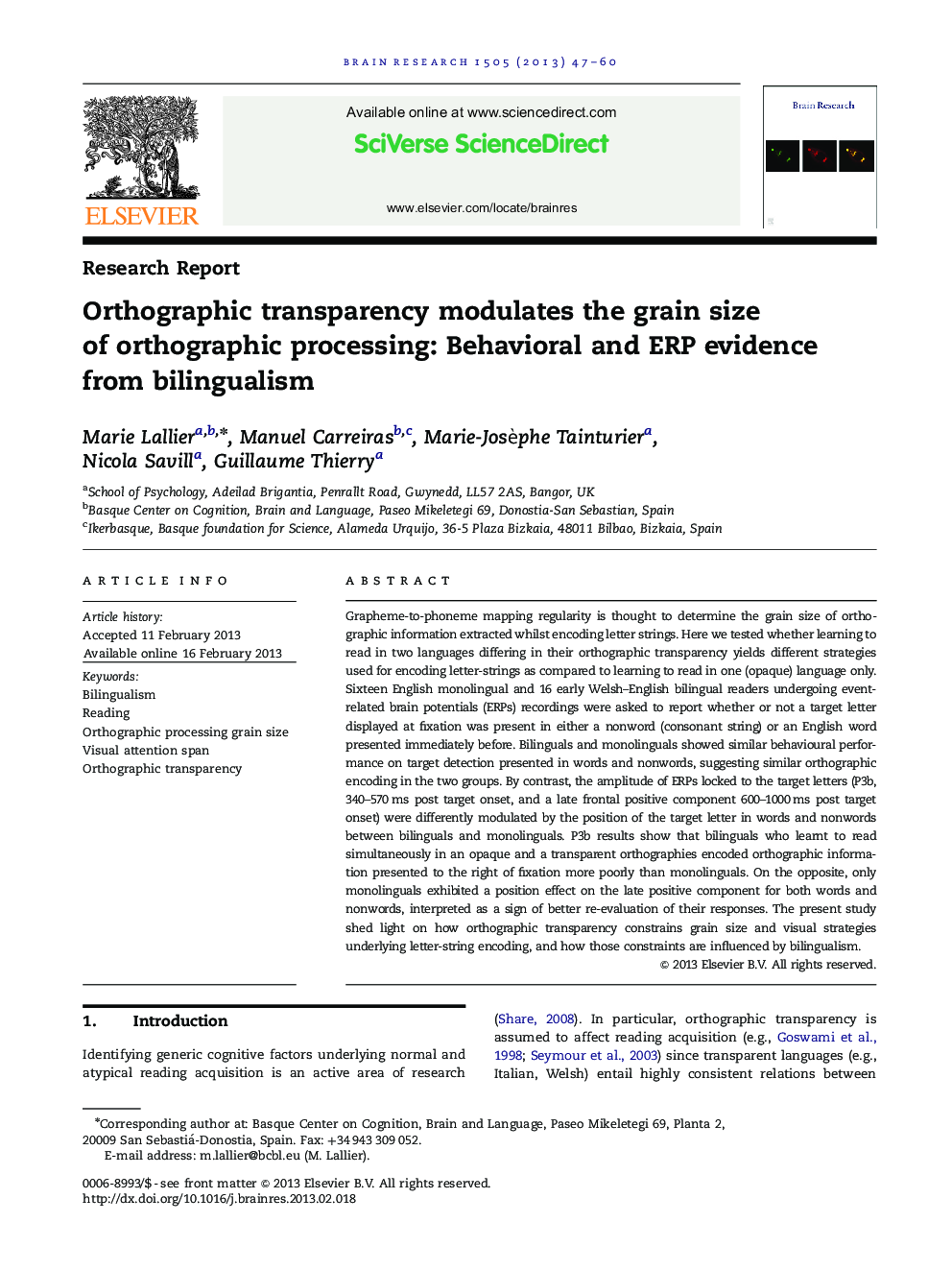| Article ID | Journal | Published Year | Pages | File Type |
|---|---|---|---|---|
| 4324722 | Brain Research | 2013 | 14 Pages |
Grapheme-to-phoneme mapping regularity is thought to determine the grain size of orthographic information extracted whilst encoding letter strings. Here we tested whether learning to read in two languages differing in their orthographic transparency yields different strategies used for encoding letter-strings as compared to learning to read in one (opaque) language only. Sixteen English monolingual and 16 early Welsh–English bilingual readers undergoing event-related brain potentials (ERPs) recordings were asked to report whether or not a target letter displayed at fixation was present in either a nonword (consonant string) or an English word presented immediately before. Bilinguals and monolinguals showed similar behavioural performance on target detection presented in words and nonwords, suggesting similar orthographic encoding in the two groups. By contrast, the amplitude of ERPs locked to the target letters (P3b, 340–570 ms post target onset, and a late frontal positive component 600–1000 ms post target onset) were differently modulated by the position of the target letter in words and nonwords between bilinguals and monolinguals. P3b results show that bilinguals who learnt to read simultaneously in an opaque and a transparent orthographies encoded orthographic information presented to the right of fixation more poorly than monolinguals. On the opposite, only monolinguals exhibited a position effect on the late positive component for both words and nonwords, interpreted as a sign of better re-evaluation of their responses. The present study shed light on how orthographic transparency constrains grain size and visual strategies underlying letter-string encoding, and how those constraints are influenced by bilingualism.
► ERP evidence that orthographic transparency influences new letter-string encoding. ► Reading in opaque languages increases the visual grain size for orthographic parsing. ► Evidence for interactive language systems in bilinguals during reading acquisition.
